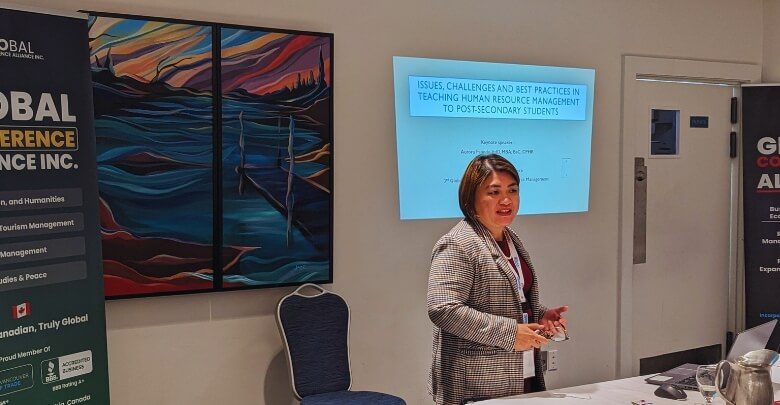In planning a successful conference, organizers often face the crucial question of selecting the right keynote speaker. Will one authoritative voice suffice, or could there be a benefit from multiple perspectives? The answer is clear. Can a conference have more than one keynote speaker?
Yes, absolutely. In fact, having two or more keynote speakers can significantly enrich the event. By diversifying the topics and voices, attendees are offered a broader array of insights. Some might find themselves drawn to the event specifically because of one speaker’s reputation or expertise.
Thus, embracing a multi-keynote approach not only enhances the overall content but can also drive attendance by appealing to varied interests. As we dive deeper, the advantages of this strategy become even more apparent.
The Purpose of Having a Keynote Speaker at Conferences
A keynote speaker plays an important role at conferences by setting the mood with strong messages and exciting stories. They start discussions with fresh ideas, making people think in new ways about different subjects. In well-known conference locations like the United States, Germany, and conferences in Canada, keynote speakers influence audiences with engaging talks and meaningful insights.
Keynote speakers connect with listeners by sharing real experiences, adding humor, and keeping their words simple yet powerful. They motivate people by discussing challenges, successes, and surprising lessons that bring value to different professional fields. Their speeches help attendees stay focused, ensuring they leave the event feeling inspired and eager to learn more.
A keynote speaker also brings credibility, making the event more respected while attracting people who seek expert knowledge. They introduce thought-provoking ideas, encouraging guests to explore new opportunities beyond their usual interests. Their presence adds excitement, making the conference memorable, engaging, and full of useful takeaways.
Types of Conference Speakers
Conferences are vibrant forums for learning and networking, often highlighted by engaging speakers. Among these, being a keynote speaker is a prestigious role, setting the tone for the entire event. Here, we explore the diverse types of speakers you might encounter at such gatherings.
Keynote Speakers
Leading the event with their significant address, keynote speakers set the overarching theme and tone. These individuals typically possess renowned expertise or a unique viewpoint. Their speeches inspire, inform, and often become the highlight of the event.
Panelists
Panelists usually engage in moderated discussions, offering diverse perspectives on a common topic. This group includes professionals from various backgrounds, ensuring a multifaceted dialogue. Attendees benefit from the blend of expertise and opinions presented.
Workshop Facilitators
Rooted in interactive learning, workshop facilitators prioritize hands-on experiences. They guide attendees through specific exercises, tools, or methods. Their goal is to impart tangible skills or insights through active participation.
Guest Speakers
Often invited due to their niche knowledge, guest speakers dive deep into specialized topics. While they may not headline the event, their sessions attract enthusiasts and professionals alike. These experts provide depth and granularity, enriching the overall content.
Motivational Speakers
Driving inspiration and energizing the audience, motivational speakers uplift and provoke thought. Through personal anecdotes or powerful narratives, they resonate on an emotional level. Their speeches invigorate attendees, offering renewed passion and enthusiasm.
Recognizing the diverse roles each speaker plays ensures a balanced and rich conference experience. By carefully curating the mix, organizers can cater to varied interests and learning preferences.
Can a Conference Have More Than One Keynote Speaker?
The structure of a conference is fluid and adaptable to the needs of its audience. Yet, questions arise: Can a conference have more than one keynote speaker?
Diversifying Voices
When asking someone to be a keynote speaker, it’s crucial to consider the diverse perspectives they bring. Having multiple keynote speakers with different backgrounds and expertise enriches the event’s content, appealing to a broader audience range. This multifaceted approach not only enhances engagement but also entices more attendees who are eager to gain insights from various angles.
Scheduling and Flow
Two or more keynotes can create dynamic shifts throughout the event’s timeline. Instead of a singular thematic focus, multiple angles emerge, preventing monotony. With careful planning, this can drive anticipation, keeping attendees hooked.
Overcoming Concerns
Some might argue that multiple keynotes dilute the primary message, yet if their themes resonate, a harmonious narrative unfolds, amplifying its impact. Thus, it’s not quantity but quality and cohesion that truly matter.
Opting for multiple keynotes, when thoughtfully done, can elevate a conference, offering depth and versatility. It’s a strategy worth considering.
Considerable Factors While Having Multiple Keynote Speakers
Juggling multiple keynote speakers can be both an asset and a challenge for conference planners. Careful consideration ensures a seamless execution.
Thematic Consistency
Synchronizing the themes of multiple speakers is paramount for coherence. Diverse viewpoints are welcome, but the core message should resonate. A disjointed narrative can confuse, rather than inspire, attendees.
By briefing speakers on the event’s overarching theme, harmony is achieved. Ensuring they’re aligned leads to collective understanding, enhancing the overall impact. Thus, thorough communication becomes essential.
Time Management
Strategically placing keynotes avoids audience fatigue and sustains interest. One right after another can feel overwhelming and repetitive. Proper spacing allows the audience to digest and reflect on insights.
Considering the event’s duration, allocating time slots becomes crucial. Each speaker deserves ample time without rushing or overshadowing others. Balance is the key to maintaining engagement throughout.
Speaker Dynamics
Understanding the interpersonal dynamics between keynotes is essential. Avoiding potential conflicts or tension benefits the event’s ambiance. A harmonious atmosphere encourages positive interactions and meaningful dialogues.
If speakers have prior collaborations or disagreements, awareness is vital. Ensuring a smooth flow involves strategic scheduling and maybe pre-event discussions. Prior knowledge aids in informed decision-making.
Audience Expectation
Attendees might have preferences or anticipate certain speakers. Recognizing and addressing these expectations ensures satisfaction. Surveys or feedback can provide valuable insights into these preferences.
Moreover, the marketing should clearly highlight multiple keynotes. This approach sets correct expectations and attracts a diverse audience. Clarity in communication prevents any potential disappointments.
Budgetary Constraints
Having multiple renowned figures can escalate costs. It’s crucial to allocate the budget effectively, ensuring quality without overspending. Financial planning becomes paramount for a successful outcome.
It’s also worth exploring alternative compensation methods. Sometimes, non-monetary perks or collaborations can appeal to potential speakers. Creativity in negotiation ensures a win-win situation for both parties.
Balancing multiple keynote speakers requires strategic planning. Yet, with careful consideration, it can result in a rich, multifaceted conference experience.
Perks of Having Multiple Keynote Speakers
Multiple keynote speakers can significantly amplify a conference’s impact. Here are the advantages of this strategy.
Diverse Perspectives
Varied keynote speakers introduce attendees to multifaceted viewpoints. This diversity enriches the event, offering a broad spectrum of insights. Attendees benefit from comprehensive knowledge and multiple expert opinions.
Enhanced Engagement
Multiple voices maintain audience interest, preventing monotony. Changing tones and styles keeps the listeners attentive and intrigued. Consequently, sessions feel fresh, sustaining enthusiasm throughout the event.
Broader Appeal
An array of speakers attracts diverse attendee groups. Professionals from varied fields may find something of interest. Thus, the event enjoys a wider reach and heightened visibility.
Risk Distribution
Relying on a single speaker carries inherent risks. Unexpected circumstances might lead to last-minute cancellations or hiccups. With multiple keynotes, the event remains robust against unforeseen challenges.
Networking Opportunities
Different keynotes draw distinct groups of professionals. This diversity can be a networking goldmine for attendees. Rich interactions and connections become a significant byproduct of the event.
Incorporating multiple keynote speakers can transform a conference into a vibrant hub of knowledge and interaction. When orchestrated well, the rewards are manifold.
Final Considerations
In the ever-evolving realm of conferences, organizers continually grapple with decisions that can shape an event’s success. Central to this is the question, can a conference have more than one keynote speaker?
As we’ve explored, the clear answer is yes. By incorporating multiple keynotes, an event can tap into a myriad of advantages like diverse viewpoints, sustained engagement, and broader audience appeal.
However, it’s essential to approach this strategy with careful planning to ensure thematic consistency and manage logistical intricacies. With the right balance, having more than one keynote speaker can elevate a conference, transforming it into a multidimensional platform for knowledge, networking, and inspiration.








